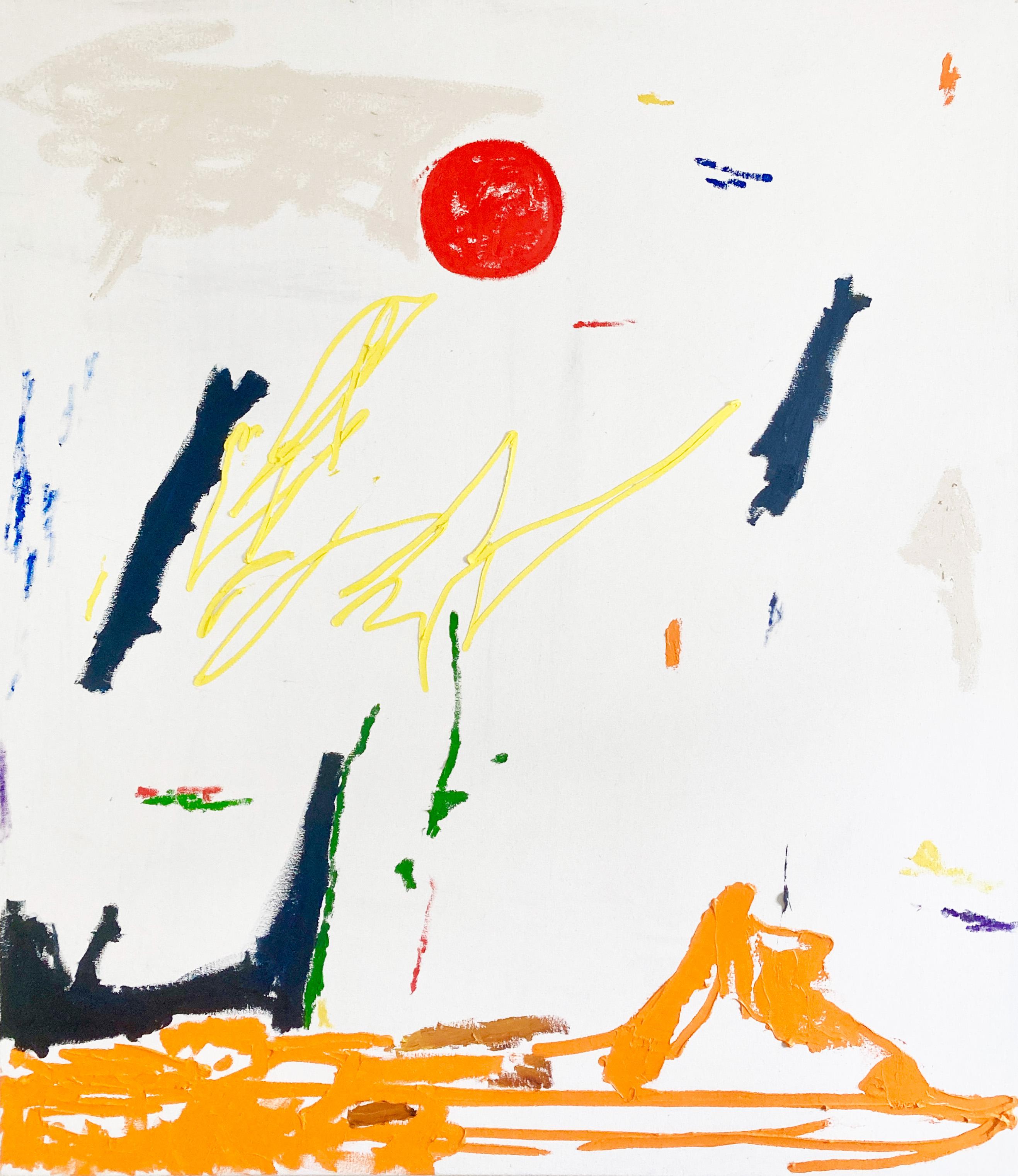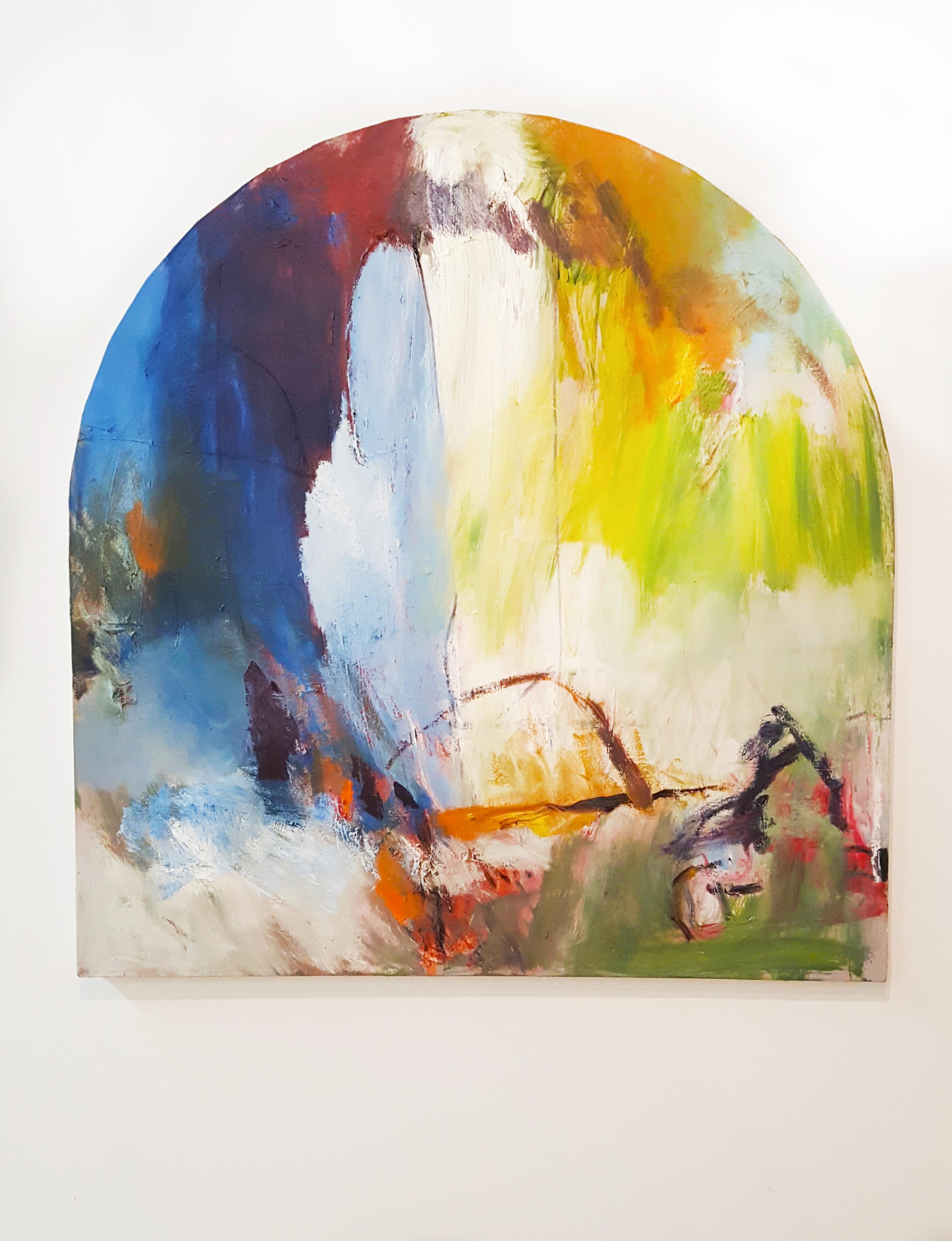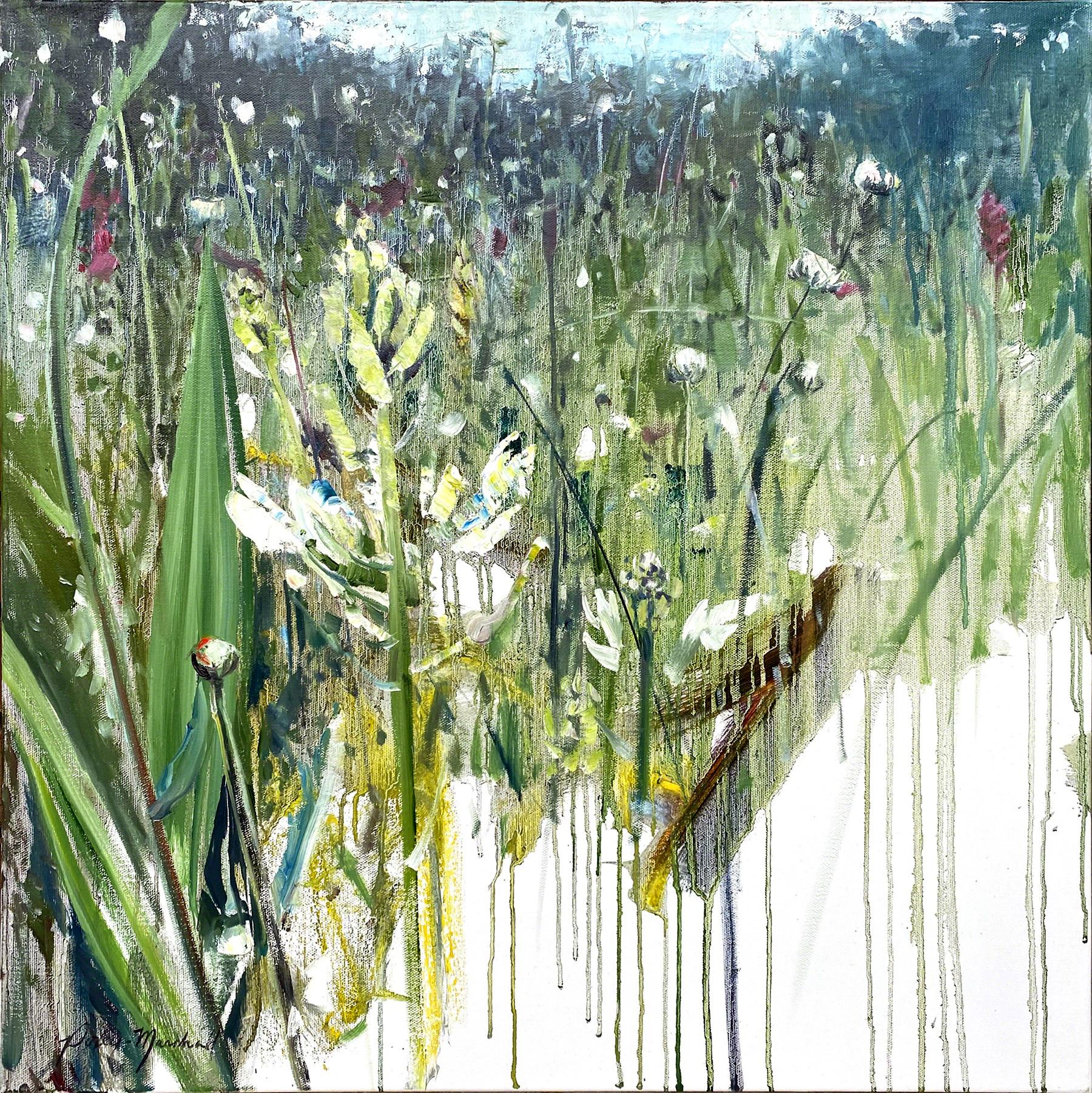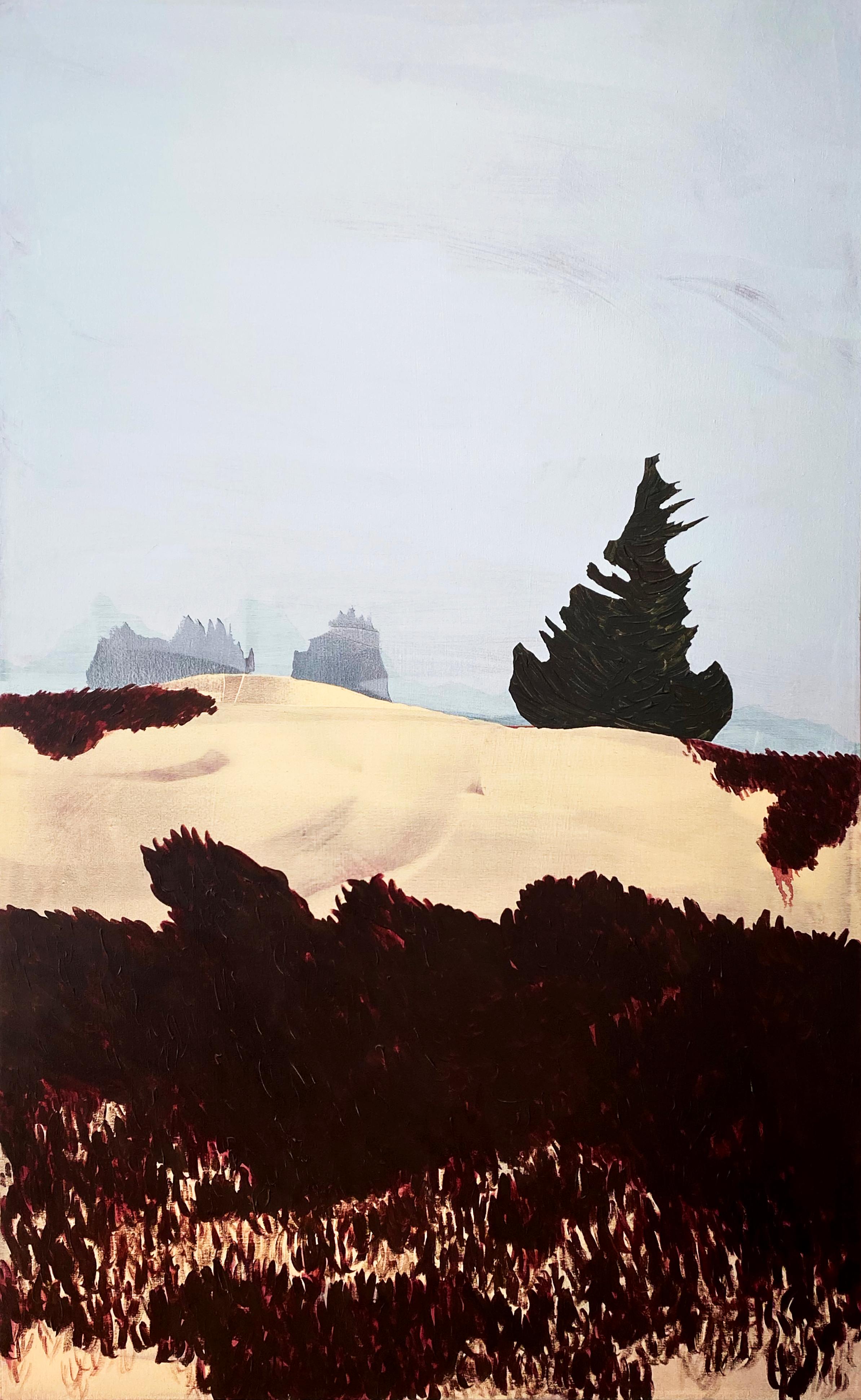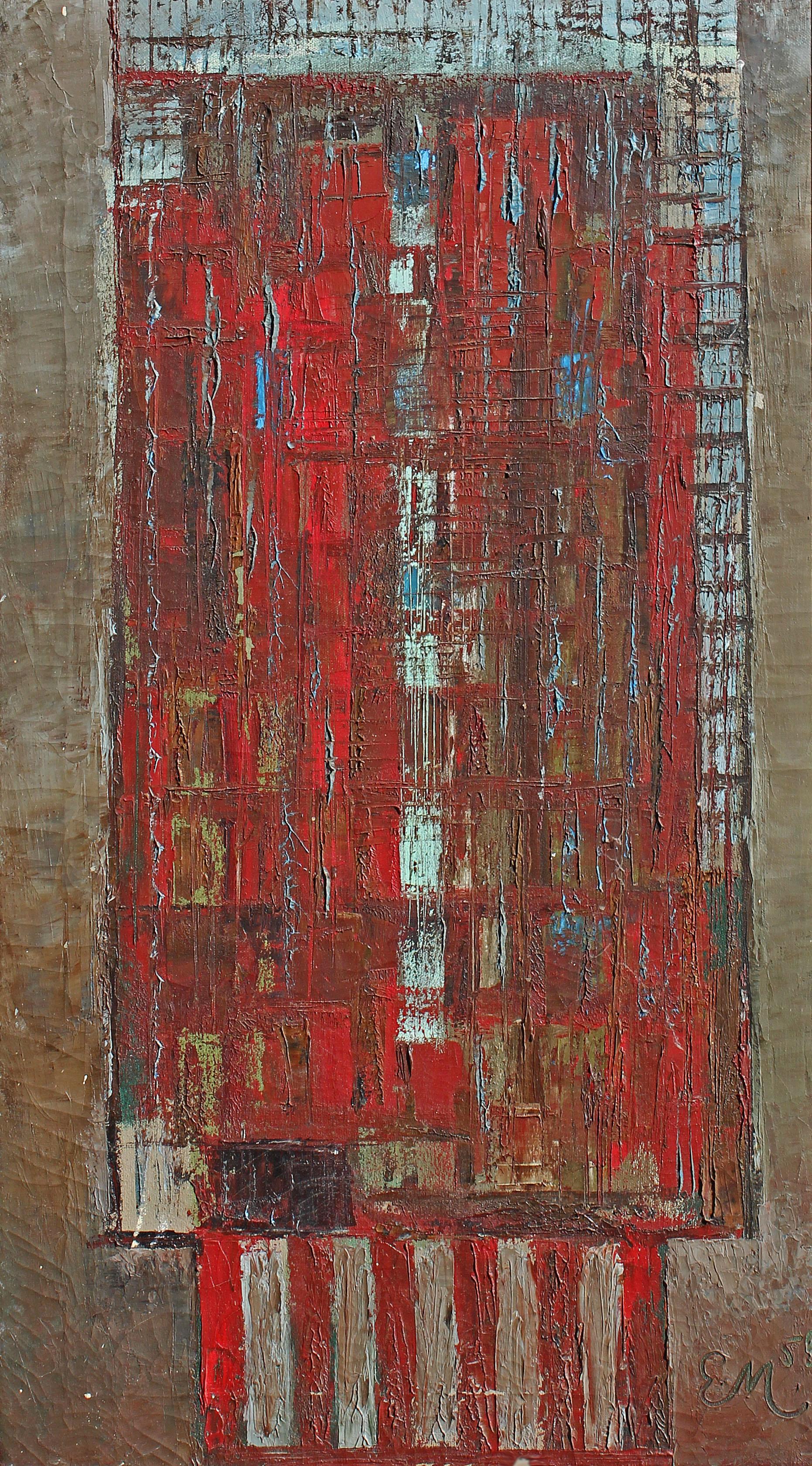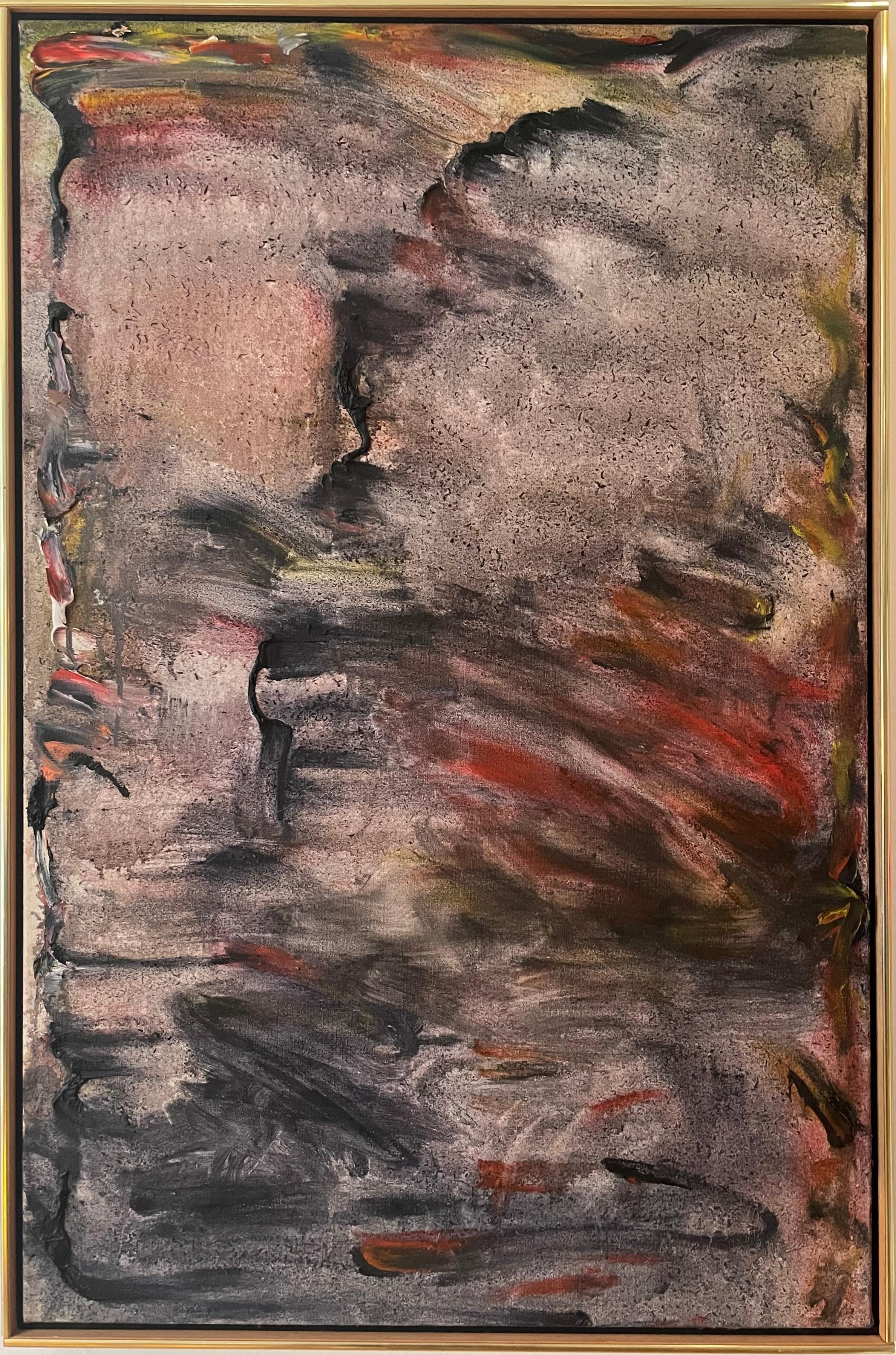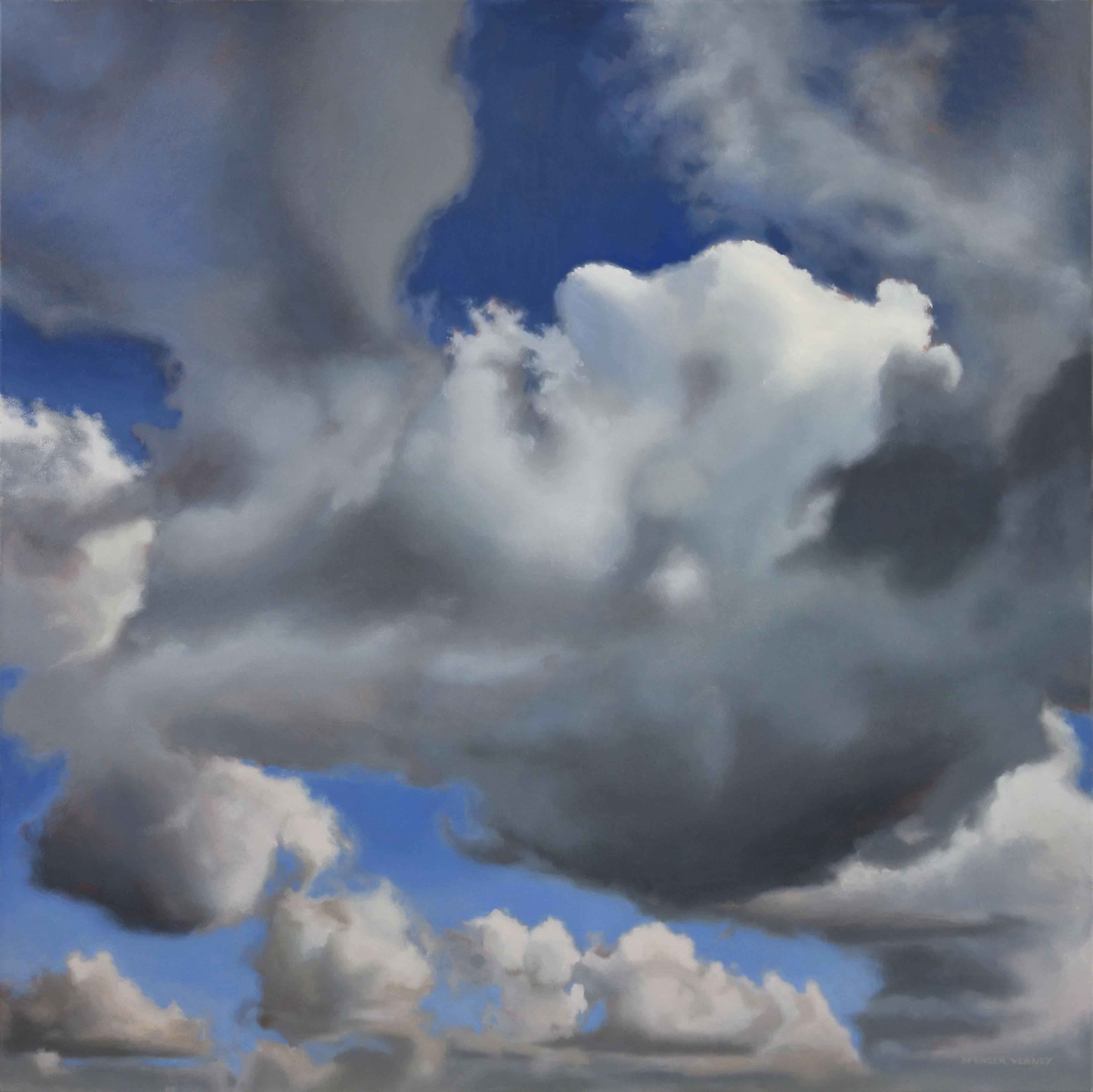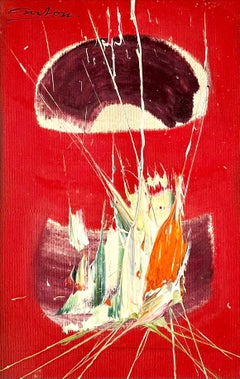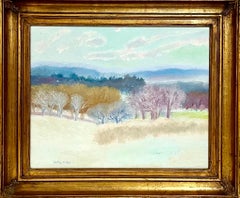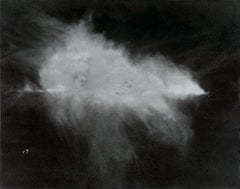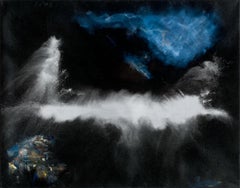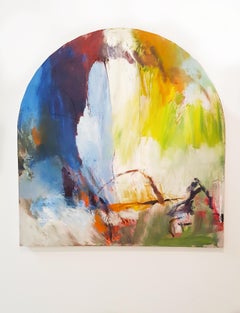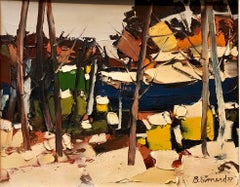
Canadian Modernist Oil Painting Abstract landscape Sugar Shack
View Similar Items
Want more images or videos?
Request additional images or videos from the seller
1 of 9
Benoit SimardCanadian Modernist Oil Painting Abstract landscape Sugar Shack1977
1977
About the Item
About the Seller
4.9
Platinum Seller
These expertly vetted sellers are 1stDibs' most experienced sellers and are rated highest by our customers.
Established in 1995
1stDibs seller since 2014
1,546 sales on 1stDibs
Typical response time: 1 hour
More From This SellerView All
- American Vivid Abstract Expressionist Art Oil Painting Norman Carton, WPA ArtistBy Norman CartonLocated in Surfside, FLNorman Carton (1908 – 1980) was an American artist and educator known for abstract expressionist art. He was born in the Ukraine region of Imperial Russia and moved to the United States in 1922 where he spent most of his adult life. A classically trained portrait and landscape artist, Carton also worked as a drafter, newspaper illustrator, muralist, theater set designer, photographer, and fabric designer and spent most of his mature life as an art educator. Carton showed in and continues to be shown in many solo and group exhibitions. His work is included in numerous museums and private collections throughout the world. Norman Carton was born in the Dnieper Ukraine territory of the Russian Empire in 1908. Escaping the turbulence of civil war massacres, he settled in Philadelphia in 1922 after years of constant flight. While attending the Pennsylvania Museum School of Industrial Art, Carton worked as a newspaper artist for the Philadelphia Record from 1928 to 1930 in the company of other illustrator/artists who had founded the Ashcan School, the beginnings of modern American art. From 1930 to 1935, he studied at the Pennsylvania Academy of Fine Arts under Henry McCarter, who was a pupil of Toulouse-Lautrec, Puvis de Chavanne, and Thomas Eakins. Arthur Carles, especially with his sense of color, and the architect John Harbison also provided tutelage and inspiration. Following his time at the Pennsylvania Academy of Fine Arts, Carton studied at the Barnes Foundation from 1935 to 1936 where he was influenced by an intellectual climate led by visiting lecturers John Dewey and Bertrand Russell as well as daily access to Albert C. Barnes and his art collection. Carton was awarded the Cresson Traveling Scholarship in 1934 which allowed him to travel through Europe and study in Paris. There he expanded his artistic horizons with influences stemming from Henri Matisse, Pablo Picasso, Chaim Soutine, and Wassily Kandinsky. While at the Pennsylvania Academy of Fine Arts, Carton was also awarded the Toppan Prize for figure painting as well as the Thouron Composition Prize. He received numerous commissions as a portrait artist, social realist, sculptor, and theatrical stage designer as well as academic scholarships. During this time, Carton worked as a scenery designer at Sparks Scenic Studios, a drafter at the Philadelphia Enameling Works, and a fine art lithographer. From 1939 to 1942, the Works Progress Administration (WPA) Federal Art Project employed Carton as a muralist and easel artist. He collaborated with architect George Howe. The WPA commissioned Carton to paint major murals at the Helen Fleischer Vocational School for Girls in Philadelphia, the Officers’ Club at Camp Meade Army Base in Maryland, and in the city of Hidalgo, Mexico. Throughout the 1940s, Carton exhibited and won prizes for his semi-abstract Expressionist and Surrealist paintings. He socialized with and was inspired by Émile Gauguin and Fernand Leger. During World War II, Carton was a naval structural designer and draftsman at the Cramps Shipbuilding Corporation in Camden, New Jersey. Here, he created non-objective sculpture with metal. After the war, Carton co-founded a fabric design plant in Philadelphia. He produced hand-printed fabrics for interiors and fashion that were featured in Harper’s Bazaar, Vogue and Women’s Wear Daily. Original fabric designs were commissioned by notable clients including Lord & Taylor, Gimbels, and Nina Ricci. Some of these designs are at the Metropolitan Museum of Art. Carton traded his partnership in the fabric design company in 1949 to focus full-time on painting. Carton had his first solo exhibition in 1949 at the Philadelphia Art Alliance. This show was followed closely by solo exhibitions at the Laurel Gallery (New York City) and Dubin Gallery (Philadelphia). At this time, his exhibited work was Abstract impressionism. In addition to painting, he taught classes at the Philadelphia Museum of Art and was the Founder and first President of the Philadelphia chapter of Artist’s Equity Association. The Philadelphia Museum of Art and the organization of the National Museums of France commissioned Carton to travel to Europe, mainly France, in 1950 for a color photography study of continental masterpieces. He was granted access to study the restoration of the Mona Lisa and was one of the very few to be given permission to remove the painting from its frame. During his three year stay in Paris, he had solo exhibits at La Sorbonne and Gallery Rene Breteau and was in 15 group shows in Paris salons including Les Sur Independants, Salon d’Automne, and Realities Nouvelles. He also exhibited at the Musee d’Art Juif where he won the Prix d’Art. The Cercle Paul Valery twice sponsored Carton to present lectures at the Sorbonne. He conducted seminars at the Louvre for the Cercle Esthetique Internationale and taught classes in and directed stage and costume design for the Theatre de Recherche at the Paris Opera. Among his Paris artist colleagues were Chana Orloff, Earl Kerkam, Sam Francis, Claire Falkenstein, Lawrence...Category
Mid-20th Century Abstract Expressionist Landscape Paintings
MaterialsCanvas, Oil
- Modernist Oil Painting Bucolic Valley Woods Landscape Ralph Della VolpeLocated in Surfside, FLRALPH DELLA-VOLPE (1923-2017) Fine Art Painter, American Contemporary The Valley Oil on canvas Hand signed lower left and again to stretcher and verso 16 x 20 inches. frame dimensions: 22 1/4 x 26 inches, wood frame Provenance: The Estate of the artist Ralph Della Volpe TRAINING: National Academy of Design The Art Students League, NYC Ralph Eugene Della-Volpe's semi-abstract paintings of often simplified, minimalist, beach scenes and anonymous portraits "convey profound awareness of mood and character", and his paintings are hardly as literal as they may first appear (Arts Magazine. "New York Exhibitions". 1965). His brightly-colored, light-infused, ornamental compositions bring together aspects of many modernist art movements including Fauvism, Impressionism, Symbolism, and abstraction. Della-Volpe first studied painting at the prestigious National Academy of Design before joining the Army during World War II. As a soldier, the artist saw action on Utah Beach, winning a Purple Heart, and his experiences undoubtedly affected his later artistic style. The Fauvist "coloristic exuberance" found in the works beginning in the mid 1960's, with their vibrant fuschias and yellows, seem to offset what could be an otherwise solemn tone to many of his works at the time. Upon his return from military service, Della-Volpe’s style evolved significantly. In the years following the second world war, his work was solemn, imbued with a quiet darkness. Over time, this darkness faded: by the 1950s, influenced by his time at the Art Students League, his oeuvre was overtaken by the tenants of Abstract Expressionism. Paintings from this period boast bold brushwork, energetic compositions, and strong color. Although the next decade saw Della-Volpe trade expressionist abstraction for figuration, his love of color continued to shine through his work.Della-Volpe took a teaching position as the first artist-in-residence at Bennett College in Millbrook, New York where he remained for 28 years, serving as chairman of the Art Department for most of that time. Obviously influenced by impressionism 's preoccupation with the treatment of light, Della-Volpe's own works have a "faultless tonal quality, with its sense of failing light—the areas of silvery gray deepening into rosy tans" (Arts Magazine. "In the Galleries". 1960). Della-Volpe has exhibited widely throughout his career and has lectured on art at colleges, universities, and galleries across the country. SOLO SHOWS: Hotchkiss Library, Sharon, Conn Millbrook Library, Millbrook,NY Gregory James Gallery...Category
20th Century Fauvist Abstract Paintings
MaterialsCanvas, Oil
- Large Original Abstract Colorful Oil Painting Israeli Kibbutz Landscape ShemiBy Calman ShemiLocated in Surfside, FLLife in Nature Canvas measures 31.5 X 39.5 (I believe this is oil it might also be acrylic.) Hand signed recto and signed and titled verso. Calman Shemi, sculptor and painter, was born in Argentina in 1939. A graduate of the School of Sculpture and Ceramics in Mendoza, he studied under the Italian-Argentinean sculptor Libero Badii whom he credits with putting him on the right path. “He taught me principals, not only related to sculpture, but human and philosophic principals. Shemi also carefully studied the work of such masters as Picasso, Caravaggio, Frank Stella and Matisse. “From each one of these great artists I learned something from observing them,” he says. In 1961, at the age of 20, Shemi immigrated to Israel and joined Kibbutz Carmia of which he was a member for twenty years. There he worked in agriculture and also as a sculptor working with wood and clay. Several of his large-scale fiberglass and polyester projects are situated in public buildings. He was a student of German-Israeli sculptor Rudi Lehmann, a pioneer of the artistic movement known as “Canaanism.” Canaanite art was an effort to create a direct relationship with the land, bypassing historic Jewish connotations—hence the land’s primordial name is used. Canaanite works, with an emphasis on the inter-action of simple shapes, bear a deliberate resemblance to the sculpture and ritual art of early civilizations of the Middle East prior to Judaism, always with an eye to the fusion of man and the land itself. Though sculpture dominated his early years as an artist, in the mid ’70s Shemi developed the idea of the “soft painting” medium. Beginning with a color drawing done to scale, Shemi layers onto the drawing irregularly shaped pieces of variously textured and colored fabrics. Using a threadless 9,000-needle sewing machine, the fabrics are meshed to one another and to the background, resulting in vibrant carpet tapestry compositions infused with exuberant color and explosive movement. These are neither aubusson nor pile but more of a felt wall hanging...Category
1980s Abstract Geometric Abstract Paintings
MaterialsCanvas, Oil
- Large Oil Painting Louisa Chase Grotto Floral Garden Abstract Neo ExpressionistBy Louisa ChaseLocated in Surfside, FLTitle: Grotto Dated: 1981 Size: 72 X 96 inches Technique: Oil paint on canvas Provenance: Robert Miller Gallery New York This is a large magnificent, Neo figurative, expressionist painting. A bright, vibrant piece in yellow and purple, green, gray and black colors. Louisa Lizbeth Chase (1951 – 2016) was an American neo-expressionist painter and printmaker. Louisa Chase was born in 1951 in Panama City, Panama. She grew up in Lancaster, Pennsylvania. She earned her BFA in printmaking from Syracuse University in 1973 and her MFA in fine art from Yale University School of Art in New Haven, Connecticut in 1975. In the year of her graduation she had her first New York exhibition, at the alternative gallery Artists Space. She taught painting at the Rhode Island School of Design from 1975–1979, and at the School of Visual Arts from 1980-1982. She was a National Endowment for the Arts grantee. She exhibited at the 1984 Venice Biennale. Her solo exhibitions include: Brooke Alexander Gallery (1989) The Texas Gallery in Houston (1987); Gallery Inge Baker in Cologne, Germany (1983) and others. She had solo exhibitions at Boston’s Institute of Contemporary Art, Wisconsin’s Madison Art Center, and Baltimore’s Contemporary Museum. Her work was featured in group exhibitions at the New Museum, the Whitney Museum, the Rhode Island School of Design’s Museum of Art, SFMoMA, LACMA and the Brooklyn Museum. Her work is in the collections of: the Museum of Modern Art, the Metropolitan Museum of Art, the Whitney Museum of American Art, the Corcoran Gallery, the Library of Congress, the Minneapolis Institute of Arts, the Walker Art Center, the Mount Holyoke College Art Museum, the Denver Art Museum, the Elvehjem Museum of Art, and the Madison Museum of Contemporary Art.[ Chase lived in Sag Harbor, New York. She died on May 8, 2016 in East Hampton, New York, at the age of 65. Louisa Chase is known for her use of schematically drawn body parts (i.e. hands, feet, torsos) and elements of landscape, separately or combined. She used a bright color palette and geometric forms. Chase paid special attention to the brushstrokes and markings in wood in her pieces. Chase’s work shows influence from New Image Painting and Neo-Expressionism. She was an accomplished printmaker and worked in woodcut, lithograph, etching, monoprint woodblock print, collage and chine colle along with watercolor and oil painting techniques. Chase’s paintings often have a sense of juxtaposition between disturbing imagery and lightness or even humor of style. “When peopled, her fragments of place are inhabited by partial figures: torsos, hands, feet. They are hovering or falling or drowning or being assumed into the sky.” This imagery is contrasted by the cartoonish style with which Chase would symbolize these body parts, the many energetic brushstrokes and the bold colors she would use. Swimmer, in the collection of the Honolulu Museum of Art, is an example of Chase's use of cartoonish human bodies and body parts rendered in geometric shapes. Exhibitions 1975 Artists Space, New York 1979 Chase's work "Tears, Ocean II" part of Painting: The Eighties at NYU 1985 New Currents: Louisa Chase. Institute of Contemporary Art, Boston 1996 Madison Art Center 2008 Goya Contemporary & Goya–Girl Press in Baltimore, Maryland Works and publications Chase, Louisa (1982). Louisa Chase. New York, N.Y.: Robert Miller Gallery. Chase, Louisa; Salcman, Michael (2003). Louisa Chase : New Paintings. Baltimore, Md.: Contemporary Museum. Amenoff, Gregory; Tallman, Susan (1989). Contemporary Woodblock Prints: Gregory Amenoff, Richard Bosman, Louisa Chase ... Jersey City, N.J.: Jersey City Museum.She was included in the seminal show "American Painting: The Eighties" organized by the Grey Art Gallery and Study Center, New York University. Artists in the exhibition Included Dennis Ashbaugh, Frances Barth, Louisa Chase, Elaine Lustig Cohen, Sam Gilliam, Nancy Graves, Richard Hennessy, Elizabeth Murray, George Noel...Category
1980s Neo-Expressionist Abstract Paintings
MaterialsCanvas, Oil
- Israeli Modernist Abstract Expressionist Jerusalem Kotel Oil Painting JudaicaBy Efraim ModzelevichLocated in Surfside, FLEfraim Modzelevich (1931-1995) Work is abstract in subject, and expressive in terms of technique. The artist uses a muted color palette, and thick layers of paint to build up his co...Category
Mid-20th Century Modern Abstract Paintings
MaterialsCanvas, Oil
- Modernist Colorado Oil Painting Abstract Cityscape Harbor Scene Pawel KontnyBy Pawel KontnyLocated in Surfside, FLUrban landscape of city harbor, marine scene, (North Africa?) bearing the influence of the earlier color-block compositions of Paul Klee. Modernist Cityscape 24" x 36" sight. oil on ...Category
20th Century American Modern Landscape Paintings
MaterialsCanvas, Oil
You May Also Like
- Raquel Sanchez, Freedom , 2022 oil on canvas 110 x 140 cmBy Raquel SanchezLocated in Jerusalem, ILRaquel Sanchez Freedom , 2022 oil on canvas 110 x 140 cm 43 x 55 in Influenced by the Impressionist and Modern masters, Raquel's personal style in re...Category
2010s Abstract Expressionist Abstract Paintings
MaterialsCanvas, Oil
- Raquel Sanchez, Courage , 2022 oil on canvas 110 x 140 cmBy Raquel SanchezLocated in Jerusalem, ILRaquel Sanchez Courage , 2022 oil on canvas 110 x 140 cm Influenced by the Impressionist and Modern masters, Raquel's personal style in recent years ...Category
2010s Abstract Expressionist Abstract Paintings
MaterialsCanvas, Oil
- Medium Sized, Colorful, Women in Abstract Expressionism Oil Painting w/ SunsetLocated in Fort Worth, TXWomen in Abstract Expressionism: Colorful Sunset Inspired Artwork by Texas artist Winter Rusiloski. Details: Winter Rusiloski Cathedral, 2016 Oil on canvas 48 x 45" View works. Wind...Category
2010s Abstract Expressionist Abstract Paintings
MaterialsCanvas, Oil, Acrylic
- Light From AboveBy Downy Doxey MarshallLocated in Salt Lake City, UT"Light From Above" by Downy Doxey Marshall, oil on canvas, 36 X 36 inches (framed size: 38 x 38 inches), $5,500. "As a child I dreamt of having a pond in my backyard. The thoughts of floating in a glass bottom boat...Category
2010s Abstract Impressionist Landscape Paintings
MaterialsCanvas, Oil
- Meadow GossamerBy Downy Doxey MarshallLocated in Salt Lake City, UT"Meadow Gossamer" by Downy Doxey Marshall, oil on canvas, 24 x 24 inches (framed size: 26 x 26 inches), $3,500. "As a child I dreamt of having a pond in my backyard. The thoughts of floating in a glass bottom boat...Category
2010s Abstract Impressionist Landscape Paintings
MaterialsCanvas, Oil
- "Gerard Point", contemporary abstract winter landscape, acrylic & oil on canvasBy Mel ReeseLocated in Brooklyn, NYAbstract landscape of Gerard Point in Springs, East Hampton in winter browns, yellows, and maroons. Lines, shapes, colors, and textures are as central to my work as is the process o...Category
2010s Landscape Paintings
MaterialsCanvas, Acrylic, Oil
